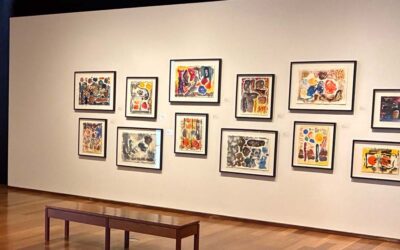Museum TrendsWatch 2023: A Digital (R)evolution

Rachael Cristine Woody
Each year the Center for the Future of Museums (under the auspices of the American Alliance of Museums) publishes a TrendsWatch report. Each year, I provide an analysis of the issues therein via a series of posts. Today’s post is A Digital (R)evolution.
It’s Digital, Again. (The Challenge Section)
Digital and the museum is not a new topic. The current event-based digital boom isn’t even new; it’s a topic both the Center and I’ve covered over the last few years: Museum Forecast 2022 — A Digital Boom, Museum Forecast 2021 — Digital Collections are a Higher Priority, and TrendsWatch 2021: Digital Awakening. However, the Center brings it into the TrendsWatch report again, but from the perspective of how museums will adapt (or not) to embedding digital programming as part of the museum’s everyday work going forward. Ideally, a program that is valued, robustly supported in the annual budget, and that can partially support itself as an income stream. The TrendsWatch section opens with the phrases: digital competence, digital literacy, digital proficiency, and closing the digital divide. The section reminds us that: “Digital competence, in this new era, is not merely nice but necessary, a fact that may induce more museums to approach digital as a pragmatic investment in sustainable operations.” There’s still a gap here. A gap in museums embracing digital, who are able to afford digital, how they use digital, etc.
What This Means for Museums
The Center opens with how the pandemic has served as an inflection point between experimentation and pragmatism. This section includes a quote from AASLH’s 2022 National Visitation Report with the statement: “during the course of the pandemic, the portion of history organizations offering virtual programming rose almost four-fold, to 40% and more than 80% at large institutions.” The Center goes on to explain what we all know to be true: digital programs can attract a wider range of participants because digital lowers both geographic and (I add) ableness barriers that are present with place-based (museum building bound) programming. The ultimate question though, and truly the ultimate challenge facing museums, is how to embed a digital program in a museum’s day-to-day operations and manufacture an income stream from digital programming akin to how it might earn income from an in-person program. The Center summarizes the conundrum well with the following quote:
Catapulted by pandemic disruptions into the digital future, many museums are now assessing whether and how to sustain or expand their investment in digital going forward.
As museums move forward—and if they intend to embrace and embed digital programming—they will need to invest in said digital program. As the Center points out, this should include planning, infrastructure, and training to take advantage of digital opportunities.
The Center’s Advice for Museums
The Center leaves us with the following considerations in the Museums Might… section.
- Integrate digital resources and goals into all departments.
- Invest in content creation and developing digital channels.
- Audit current digital assets. (How do they contribute? What’s the cost of maintenance?)
- Investigate what current and potential audiences want from digital.
- Identify how digital can contribute to the museum’s financial sustainability.
- Cultivate staff development in digital literacy.
Conclusion
Digital isn’t new to museums. Yet, the majority of museums have approached digital programs haphazardly—making it difficult to build a sustainable program, let alone one that could serve as an additional museum income stream. The museum field and each museum need to consider how to craft (and financially support) a comprehensive digital program that fits the needs and goals of the organization. There is no better time than now to make this programmatic change. Museums that continue to linger on the digital fringes or ignore it completely will be left behind, and the longer they wait the larger the digital proficiency gap will become—impacting museum stakeholders and museum income.

Rachael Cristine Woody
Rachael Woody advises on museum strategies, digital museums, collections management, and grant writing for a wide variety of clients. She has authored several titles published by Lucidea Press, including soon-to-be-released Prepare for Takeoff: Get Your Museum Digital Project off the Ground. Rachael is a regular contributor to the Think Clearly blog and an always popular presenter.
Never miss another post. Subscribe today!
Similar Posts
From Preservation to Resilience: An Introduction to Building Resilient Digital Collections
Preserving a digital collection is a job that is never done. But what if we shifted our focus from preservation to building digital resilience?
Client Spotlight: MacLaren Art Centre Goes Beyond Collections Care to Access and Growth
“As our needs evolved, it became clear that our existing CMS was no longer working for us. Not only do we need to perform basic collections care, we need a system that will support public access, enable growth, and match our innovative strategies.”
Museum Collections Online: Digital Storytelling Blog Series Roundup
An overview of 10 blog post series that highlight how museums can leverage online collections and digital storytelling platforms, strategies, tools, and best practices.
How Museums Can Broaden Access and Improve Accessibility with Digital Storytelling
Museum expert Rachael Cristine Woody explains how digital storytelling expands access and improves accessibility of museum collections with inclusive multimedia formats.




Leave a Comment
Comments are reviewed and must adhere to our comments policy.
0 Comments